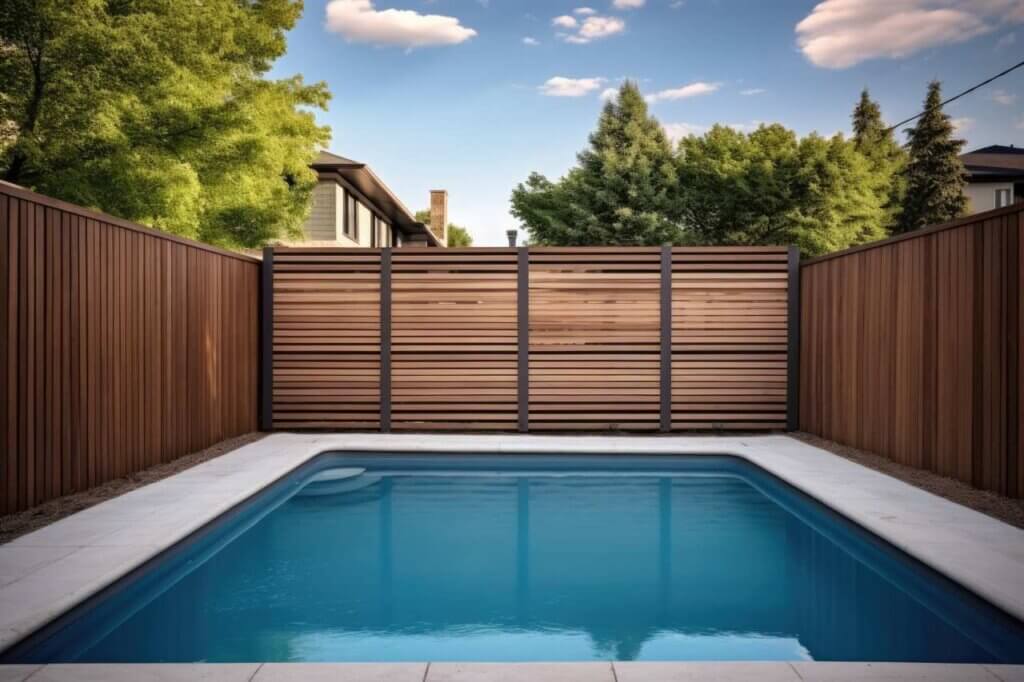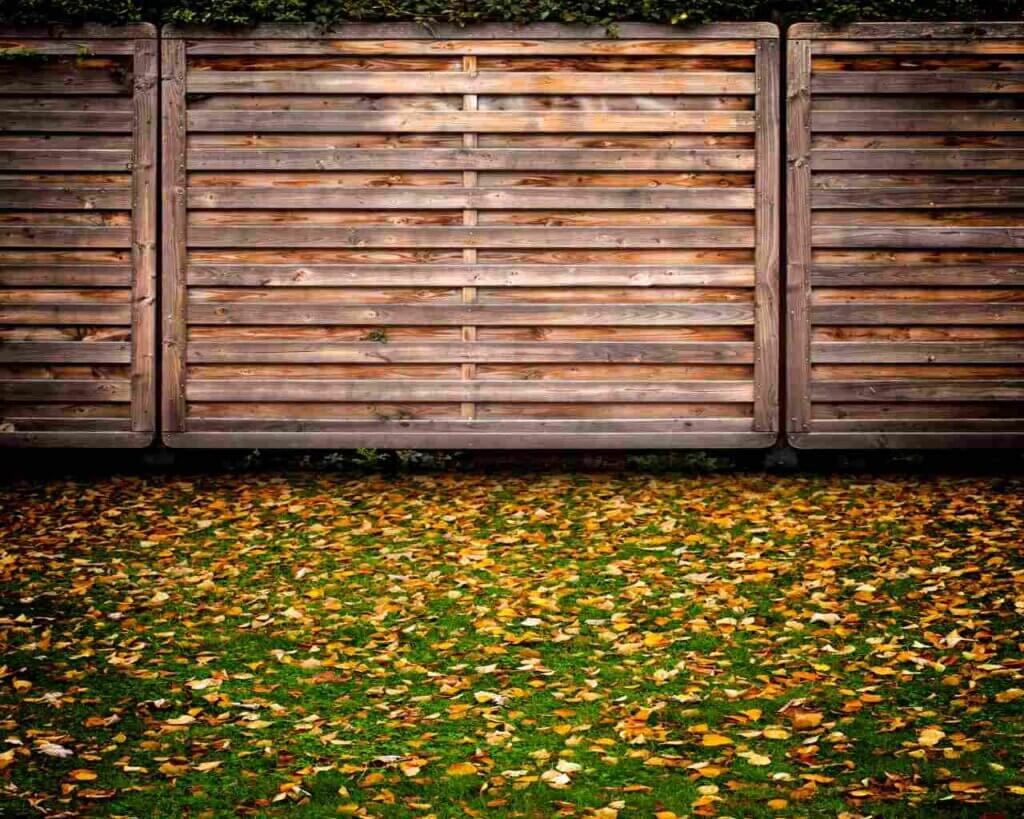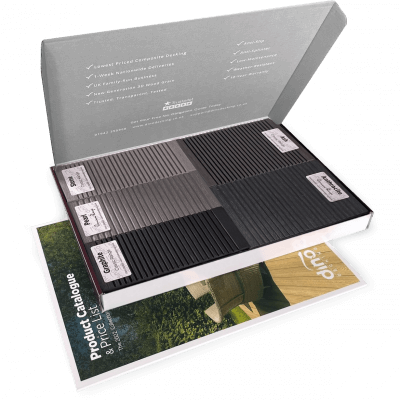5 Composite Decking Lighting Ideas
Our composite decking looks great in any setting, but you can really make your outdoor spaces shine with our decking
Products in Stock
Lowest Prices
Express Delivery
10-Year Warranty
Early April Sale. Up To 15% Off.

When it comes to choosing the right fencing material for your property, you’re faced with a plethora of options. Two popular choices that often come head-to-head are composite and wood fences. But how do you decide which one is best suited for your needs? Let’s explore the key differences between these two types of fencing to help you make an informed decision.
Selecting the appropriate fencing material is more than just a matter of aesthetics. It’s a decision that impacts your property’s security, privacy, and overall value. The right choice can enhance your outdoor living space, provide long-lasting protection, and even boost your home’s curb appeal.
When you’re investing in a fence, you want it to stand the test of time. So, how do composite and wood fences measure up in terms of durability?
Composite fences are engineered to withstand the elements. Made from a blend of recycled plastics and wood fibres, these fences are resistant to rot, warping, and insect damage. They don’t splinter or crack, making them a safe option for homes with children or pets.
Our high quality composite fence panels are designed to maintain their structural integrity and appearance for decades, coming with warranties of 20 years or more.
Wood fences, while classic and beautiful, are more susceptible to environmental factors. They can rot, warp, or become infested with insects over time. However, with proper treatment and regular maintenance, a wood fence can last 10 to 15 years.
Just like when it comes to comparing composite and vinyl fencing, initial costs and long-term expenses are two key factors to consider when deciding between composite and wood:
Upfront, composite fencing tends to be more expensive than wood. However, when you factor in the long-term costs, the picture changes. The durability of composite fencing means you’ll spend less on repairs and replacements over time.
Wood fencing is generally less expensive initially, making it an attractive option for those on a tight budget. However, the ongoing maintenance costs, including staining, sealing, and potential repairs, can add up over the years.
The look of your fence plays a significant role in your property’s overall appearance, and both composite and wood fences offer distinct aesthetic advantages.
Composite fences come in a wide range of colours and styles, many of which mimic the look of natural wood. They maintain their colour over time, resisting fading and staining. This consistency in appearance can be a significant advantage for those seeking a polished, uniform look.
There’s no denying the natural beauty of wood. Its organic texture and warm tones can add a classic, timeless appeal to any property. Wood fences can be painted or stained to match your aesthetic preferences, offering versatility in design.

In today’s eco-conscious world, the environmental footprint of our choices matters more than ever.
Composite fencing often incorporates recycled materials, making use of plastics and wood fibres that might otherwise end up in landfills. Moreover, these fences don’t require the use of harmful chemical treatments throughout their lifespan.
Wood is a renewable resource, which is a point in its favour. However, the treatments used to protect wood fences can be harmful to the environment. Additionally, the shorter lifespan of wood fences means more frequent replacements, potentially leading to more waste.
The ease of installation can significantly impact your fencing project’s timeline and cost.
Composite fencing systems are often designed for easy installation. Many come with pre-made panels and post systems that simplify the process. While professional installation is recommended, skilled DIY enthusiasts might find composite fencing a manageable project.
Wood fences typically require more labour-intensive installation. Each board needs to be individually attached, and posts must be securely set. While it’s possible to install a wood fence yourself, it’s a more time-consuming process that often benefits from professional expertise.
The ongoing care needed to keep your fence in top condition is an important consideration.
One of the biggest advantages of composite fencing is its low maintenance requirements. These fences don’t need to be painted, stained, or sealed. A simple wash with soap and water is usually sufficient to keep them looking their best.
Wood fences require regular maintenance to preserve their appearance and structural integrity. This includes periodic staining or painting, sealing to prevent moisture damage, and potential replacement of damaged boards. While some homeowners enjoy this hands-on aspect, others may find it time-consuming and costly.
Choosing between a composite and wood fence ultimately comes down to your specific needs, preferences, and circumstances. Consider factors such as your budget, desired lifespan, aesthetic preferences, and how much time you’re willing to dedicate to maintenance.
If you’re looking for a low-maintenance, long-lasting option and don’t mind a higher upfront cost, composite fencing could be the ideal choice. On the other hand, if you appreciate the natural beauty of wood and are willing to invest time in upkeep, a wood fence might be more your style.
Both composite and wood fences have their strengths, and there’s no one-size-fits-all answer. By weighing the factors we’ve discussed – durability, cost, aesthetics, environmental impact, installation, and maintenance – you can make an informed decision that best suits your needs.
Remember, a fence is a long-term investment in your property. Take the time to explore your options, ask questions, and even request samples if possible. Whether you choose the modern reliability of composite or the classic appeal of wood, the right fence can enhance your property’s beauty, security, and value for years to come.

Our sample pack contains a sample piece of each colour currently available. Order your free sample pack today to compare the colours and get a true feeling of the Dino Decking range!
Our composite decking looks great in any setting, but you can really make your outdoor spaces shine with our decking
If the idea of having rats under your decking makes you shiver, don’t worry. We’ll let you know the signs
Business hours
Monday: 09:00 – 17:30
Tuesday: 09:00 – 17:30
Wednesday: 09:00 – 17:30
Thursday: 09:00 – 17:30
Friday: 09:00 – 17:30
Saturday: Closed
Sunday: Closed
Contact us
01942 355968
support@dino.co.uk
Collection Address: Unit 1 Wetheral Close Hindley Ind Estate Wigan Greater Manchester North West WN2 4HS
Pages
Products
Testing
Copyright 2025 Dino Decking Ltd All Rights Reserved.
VAT Number: GB296097848.
Company Number: 10837233.